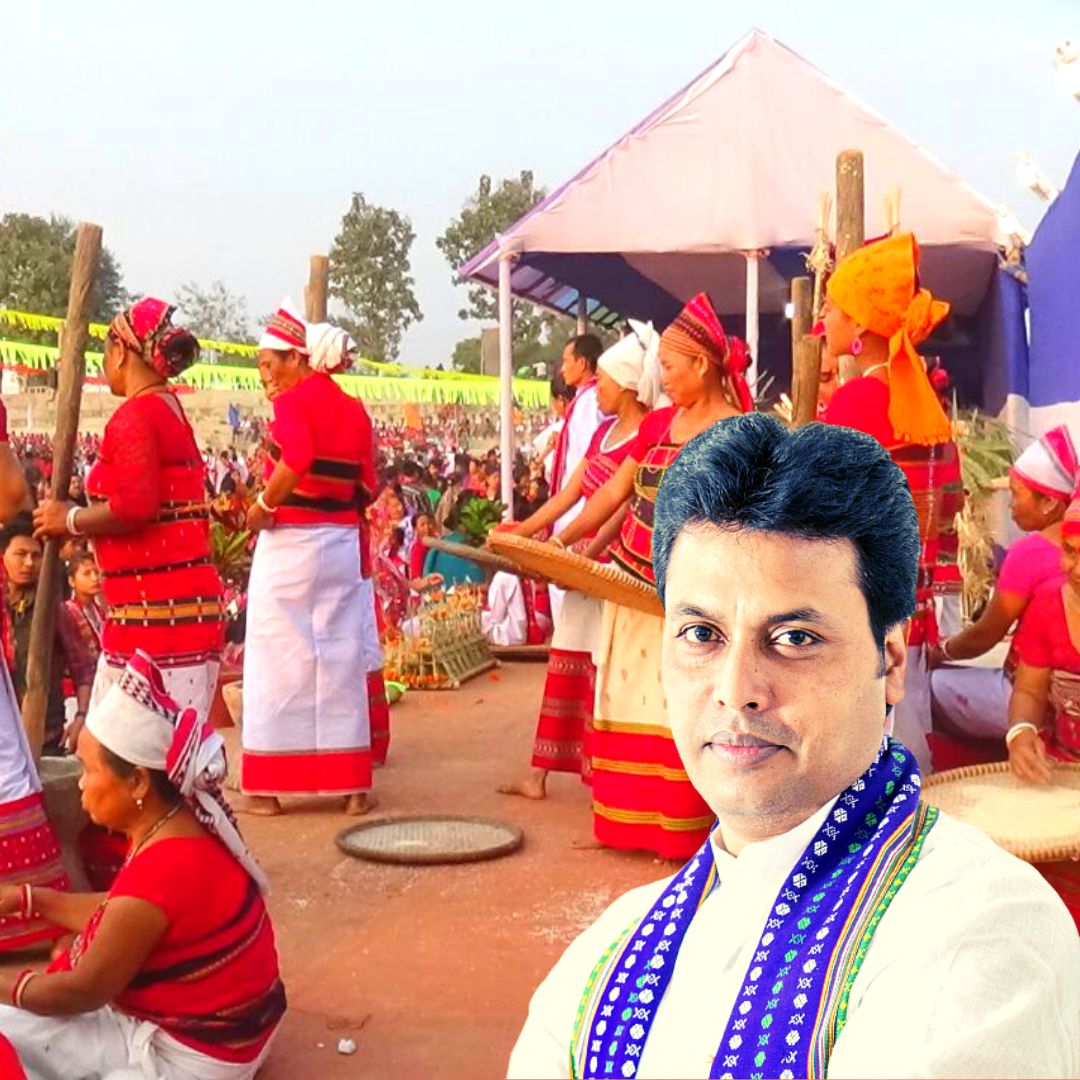
Image Credit- Wikipedia, Tripura.Gov
Tripura's Tribal Attire 'Risa' To Get GI Tag: Here's How It Gained Socio-Cultural Prominence
Writer: Mrinalini Kaushik
She is a student of journalism, keen on learning new ways to unlearn, deconstructing news and life. Interested in exploring new media as medium is the message. Avid follower of sports and politics
Tripura, 8 May 2022 12:20 PM GMT
Editor : Shiva Chaudhary |
A post-graduate in Journalism and Mass Communication with relevant skills, specialising in content editing & writing. I believe in the precise dissemination of information based on facts to the public.
Creatives : Shiva Chaudhary
A post-graduate in Journalism and Mass Communication with relevant skills, specialising in content editing & writing. I believe in the precise dissemination of information based on facts to the public.
The state government will aim to promote risa nationally as Tripura's signature garment and get international recognition for the handwoven cloth to protect their cultural integrity and generate employment.
Tripura's Chief Minister Biplab Kumar Deb announced that risa, a traditional attire worn by the indigenous communities, will be getting the Geographical Indication (GI) tag. Risa is a traditional cloth used as a woman's upper garment, a stole, or a headgear.
He gave the information in a social media post on May 7, 2022. "Risa will get GI tagging. Culture and tradition will get a new direction. GI tagging will be done to give international recognition to risa," CM Deb wrote in his post.
The adequate documents regarding the GI tag are yet to be sent to the Centre, as stated by the CM.
Cultural Value Of Risa
The whole attire of Tripura tribals has been claimed to originate way before the ruling period of the Manikya dynasty, which presided over Tripura for almost 500 years since the 15th century.
Risa is rooted in the socio-cultural and religious practices of the tribal communities in Tripura. For example, when teenage girls turn 12 or 14 years old, they receive the risa for the first time. This ritual is called Risa Sormani, as reported by EastMojo.
Furthermore, risa is used during festivals such as Garia Puja, praising the Lord Garia, the deity of liestock and wealth. The festival also became a symbol that connected the tribals with the non-tribal people.
Even in the mundane life, risa becomes versatile; men use it as a turban or muffler in winters, mothers use it to tie their babies to them in a makeshift pocket at the back, and it is given to people as a mark of glory.
Political Symbol
Since his campaigning days, CM Deb has been wearing a risa on his shoulders. Most of the party members of the ruling alliance, Bharatiya Janata Party-Indigenous People's Front of Tripura, have sported risa while visiting, making speeches, and during auspicious events.
They believe that promoting the tribal attire will symbolise the message that their government's primary objective is 'empowering' the indigenous people of Tripura, as reported by The Indian Express.
Risa is a common thread between the diverse tribal communities of Tripura, being shared across 19 different tribes while they all have distinct designs.
Promoting Tripura's Culture For Development
The state government propounds that due to the apathy of previous governments, skilled Tripuri artisans and weavers were not able to sell their products internationally and therefore suffered, especially during Covid-19 when markets and connectivity to the mainland became scarce.
The making of risa has also changed with the rise in competition as power loom-manufactured products become widely available at lower prices.
The state government will aim to promote risa nationally as Tripura's signature garment and get international recognition for the handwoven cloth to protect their cultural integrity and generate employment.
Also Read: '1 For 10 Trees': Tripura's Unique Afforestation Drive To Mitigate Lost Greenery
 All section
All section













